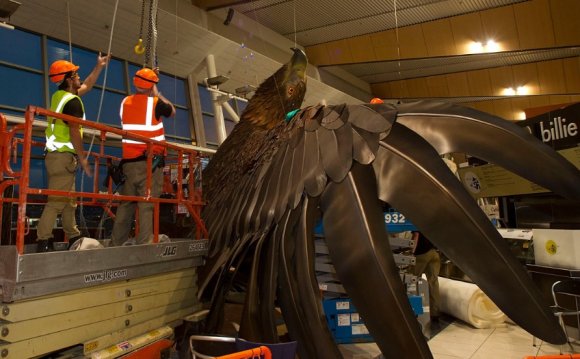
 The icebergs off the New Zealand coast in 2006 (pictured) provided a mini-boom for tourism and helicopter companies.
The icebergs off the New Zealand coast in 2006 (pictured) provided a mini-boom for tourism and helicopter companies.
STORY HIGHLIGHTS
- More than 100 icebergs from Antarctica heading towards New Zealand waters
- Biggest iceberg estimated to be 500 meters wide, 350 meters thick
- Current reports put icebergs around 200 miles from New Zealand's southern coast
- Last sighting of icebergs from New Zealand was 2006; only second time in 78 years
Hong Kong, China (CNN) - New Zealand is preparing for some rare spring visitors.
More than 100 icebergs that were first spotted off the coast of Macquarie Island, an Australian territory around 900 miles south east of Tasmania, are now thought to be only 200 miles away from New Zealand's south coast.
This is only the second time in 78 years that large Antarctic icebergs have been sighted so far north.
The previous occasion was in late 2006 when icebergs could be seen from the eastern coast of New Zealand's South Island, even from the hills around Christchurch.
According to National Institute of Water and Atmospheric Research (NIWA), which is tracking the icebergs by satellite, the largest one is thought to be 500 meters wide, 50 meters tall and with a total thickness of 350 meters.
There are an estimated 100 main icebergs heading for New Zealand and possibly hundreds of smaller ones that form around them as they break up.
Only around 10 percent of an iceberg is visible above the water level, making them a hazard to shipping. In response Maritime New Zealand issued an alert to shipping in the area, which is home to many deep-sea fishing fleets as well as cruise ships and cargo freighters that port in Invercargill on the southern coast of New Zealand.
"While the size of the icebergs has attracted a lot of attention, it is not unusual for icebergs to be found in these waters, " a spokesperson for Maritime New Zealand told CNN, who continued to say that alerts for smaller icebergs are not uncommon.
But a half-kilometer wide iceberg visible from New Zealand's coast would represent a very rare occurrence.
"An iceberg that size this far north is pretty significant, " Philip Duncan, Head Weather Analyst of the New Zealand-based Weather Watch Center told CNN.
It is thought that the current flotilla of icebergs came off the Ross Ice shelf between 2000 and 2002, the same period that produced the 2006 icebergs.
The question now is what caused the huge fresh water icebergs to break off from an Antarctic Ice shelf and what has allowed them to travel so far north.
YOU MIGHT ALSO LIKE












